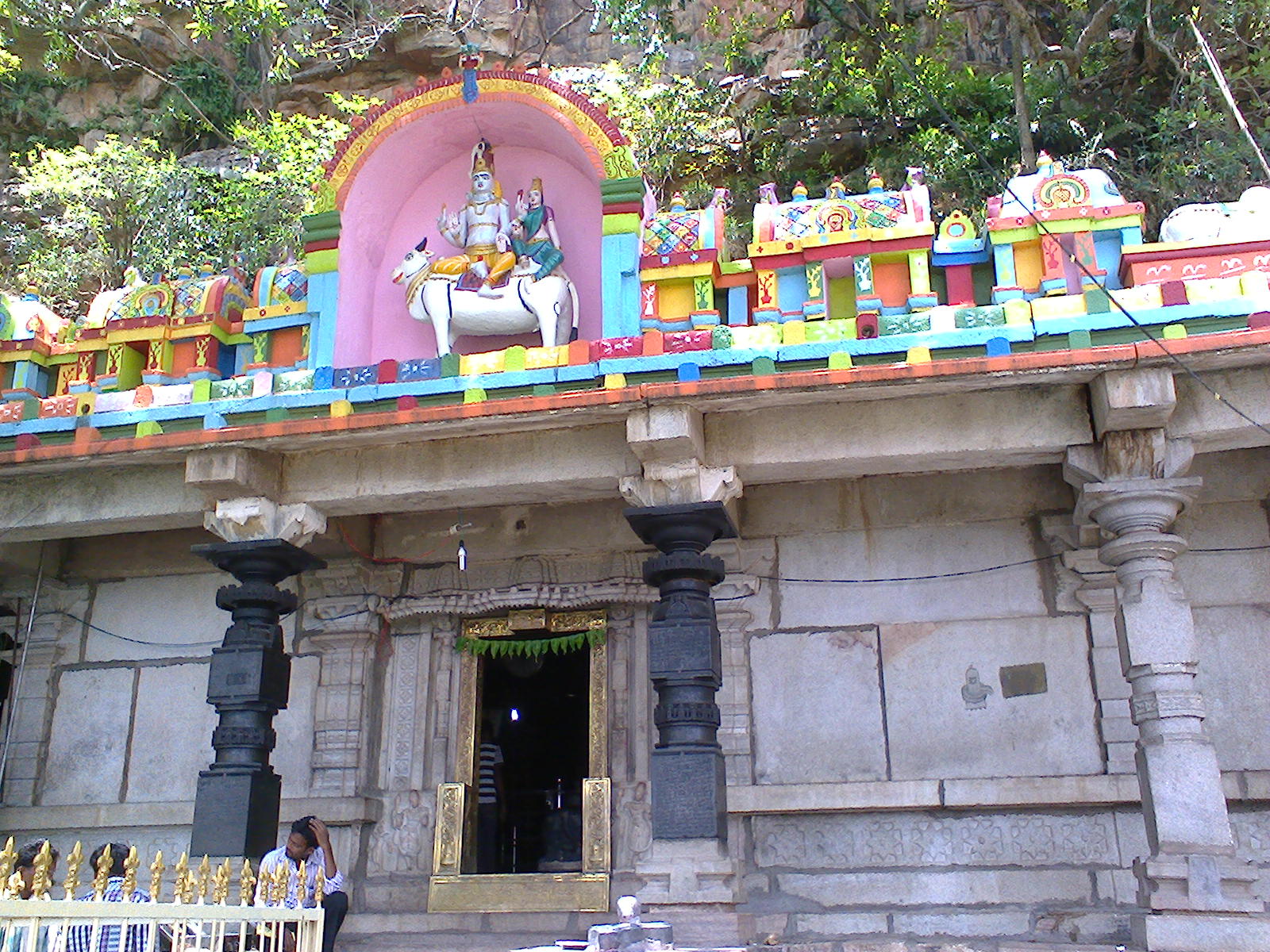Nestled in the scenic forests of the Nallamala Hills, the Uma Maheshwaram Temple is one of the hidden gems of Telangana. Located near Achampet in the Nagarkurnool district, this temple is often described as the northern gateway to the Srisailam temple complex, one of the most revered Jyotirlingas of Lord Shiva. Unlike many crowded shrines across India, Uma Maheshwaram offers a serene blend of natural beauty, spiritual depth, and historical significance.
The temple sits at an elevation of nearly 3000 feet above sea level, which not only provides a cooler climate but also surrounds the shrine with dense forests, rocky landscapes, and breathtaking views of the valley below. For those who are seeking both devotion and peace, this temple offers an experience that feels untouched by time.
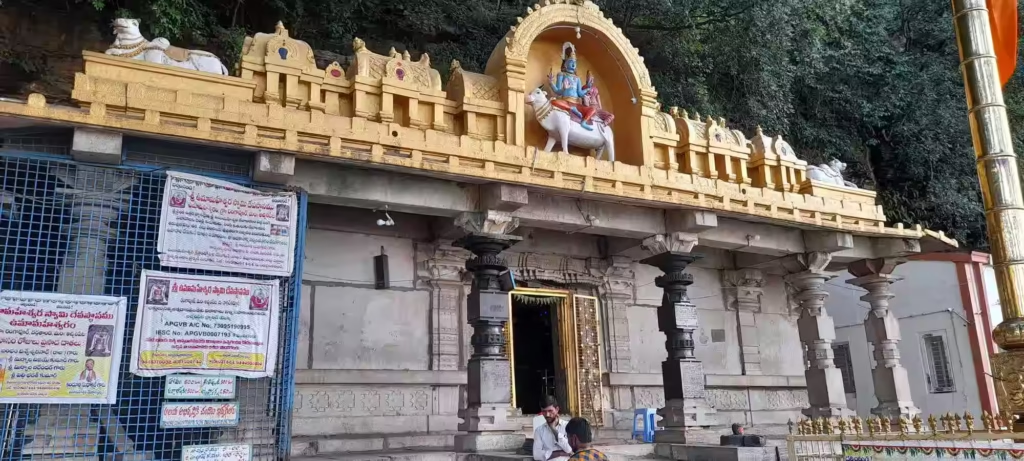
Historical and Mythological Background
The Uma Maheshwaram Temple is steeped in history and mythology. According to legends, the temple is associated with Lord Shiva and Goddess Parvati, worshiped here together as Uma and Maheshwara. The very name Uma Maheshwaram signifies the divine union of the goddess and the lord, representing harmony, balance, and eternal companionship.
Mythology connects this temple to the epic Mahabharata. It is said that the Pandavas visited the forests around Nallamala during their exile, and they offered prayers here to Lord Shiva. The presence of a natural cave near the temple reinforces these connections, as many devotees believe that sages and ascetics performed penance in these very surroundings.
Historically, the temple’s origins are believed to date back to the 2nd century CE, with contributions from rulers of the Satavahana dynasty and later from Kakatiya kings who patronized several shrines in Telangana. Carvings and inscriptions around the temple bear testimony to its antiquity and importance in regional culture.
Architectural Features
The Uma Maheshwaram Temple reflects the architectural style typical of South Indian temples yet carries certain unique features that set it apart. The sanctum sanctorum houses the Shiva Linga, which is worshiped as Maheshwara, and beside it is the idol of Goddess Uma. This joint worship of Shiva and Parvati adds to the temple’s aura of togetherness and divine union.
The temple is partly cave-based, which gives it a distinctive character. The natural rock formations blend seamlessly with the constructed mandapas and gopuram. Visitors often notice how the sanctum remains cool even during hot summers, a result of its cave-like structure and elevation.
Intricate carvings can be seen on the temple walls, though many have been worn down by time. They depict various deities, floral motifs, and mythological themes, reflecting the craftsmanship of the artisans who built and maintained the temple centuries ago. Unlike grand temple complexes that overwhelm with scale, Uma Maheshwaram has a simple yet powerful presence that invites personal reflection and prayer.
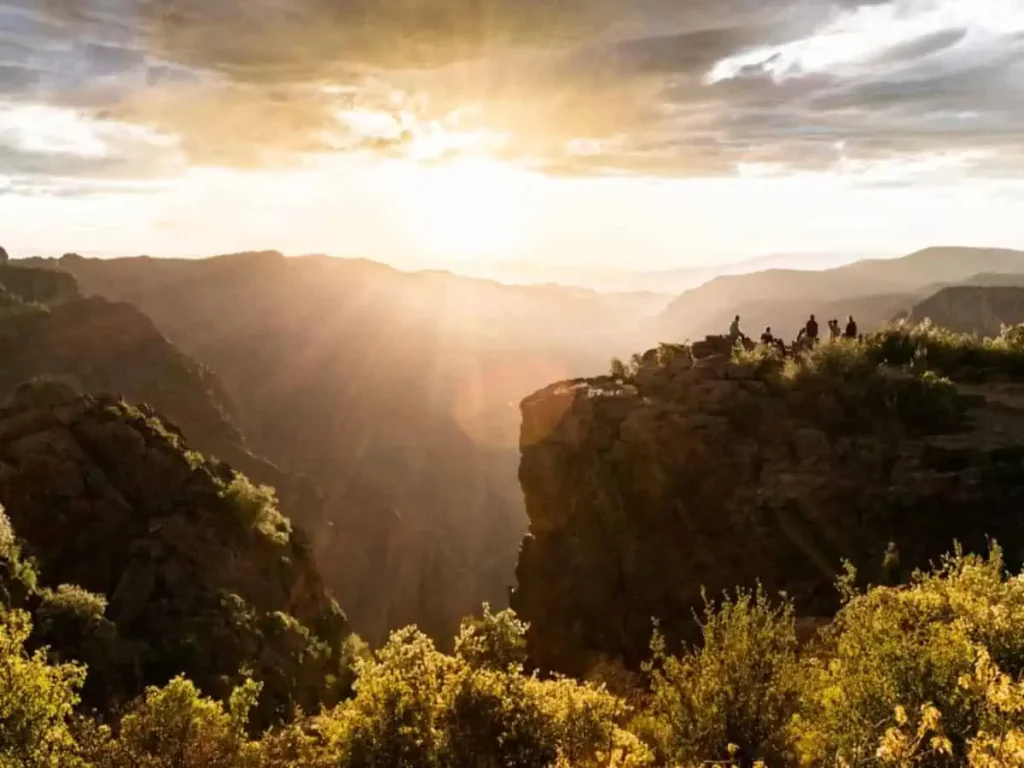
Spiritual Significance
For devotees of Lord Shiva, Uma Maheshwaram holds a special place as it is considered the northern entrance of the Srisailam temple complex. In ancient traditions, pilgrims would stop here to offer prayers before continuing their journey southward to Srisailam. Even today, many devotees follow this practice, considering it auspicious to begin their pilgrimage at Uma Maheshwaram.
The temple is also believed to have strong spiritual energy. Many yogis and saints have meditated in the caves and forests surrounding it. Devotees often describe feeling a sense of calmness and detachment from worldly worries the moment they step into the temple. The divine presence of Uma and Maheshwara together represents balance, making it an ideal place for couples and families seeking blessings of unity and harmony.
Festivals and Rituals
Like many temples dedicated to Lord Shiva, Maha Shivaratri is the most celebrated festival at Uma Maheshwaram. Thousands of devotees gather during this time, offering prayers, chanting hymns, and staying awake through the night in devotion to the Lord. The temple becomes vibrant with lamps, music, and rituals that connect the community with their faith.
Other important occasions include Karthika Masam, when devotees light lamps and perform deepa aradhana, and Ugadi, the Telugu New Year, when special pujas are performed. Apart from these, daily rituals are carried out with devotion by the temple priests, ensuring that the spiritual energy of the shrine is kept alive.
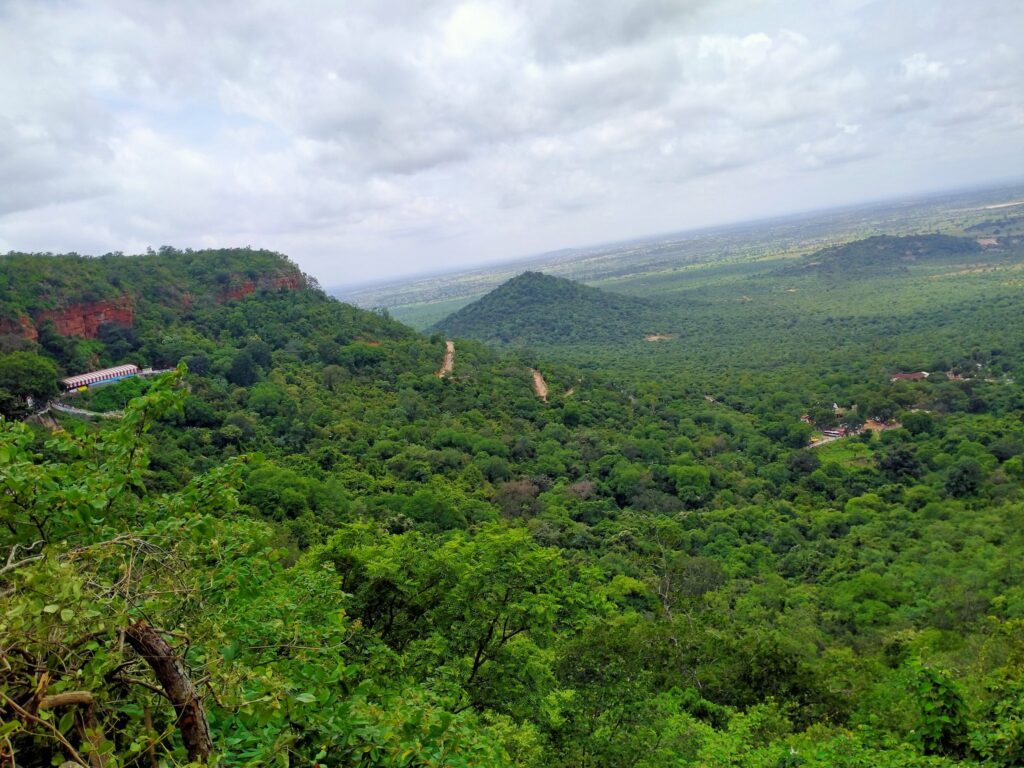
Natural Surroundings
What makes Uma Maheshwaram truly special is its natural setting. Surrounded by dense forests of the Nallamala Hills, the temple feels like it is embraced by nature. The chirping of birds, the rustling of leaves, and the distant call of wildlife create an atmosphere that is meditative in itself.
Nearby, there are perennial springs that provide water throughout the year. One of the springs, known as Papa Nashini, is believed to have the power to wash away sins. Pilgrims often take a dip here before entering the temple, considering it a purifying ritual. The presence of these natural water bodies adds to the sanctity of the place.
For trekking enthusiasts, the trails around Uma Maheshwaram are a delight. The walk through the forests and rocky pathways not only offers adventure but also a spiritual connection with nature. Watching the sunrise or sunset from the hills near the temple is a mesmerizing experience that stays with visitors long after their journey ends.
Visiting Experience
Visiting Uma Maheshwaram Temple is a unique experience because it combines devotion, history, and nature. The temple is not heavily commercialized, which means you can expect less crowd and more tranquility compared to other famous shrines.
As you walk towards the temple, you will notice how the sound of the modern world fades away and is replaced by the calm of the forest. The temple itself is modest in size, but the vibrations it holds are profound. Many visitors choose to spend time sitting in silence near the sanctum or in the caves, reflecting and meditating.
The cool air, the fragrance of incense, and the chants of the priests create an environment where time seems to slow down. Whether you are a devotee, a history enthusiast, or a traveler seeking peace, the temple welcomes you with open arms.
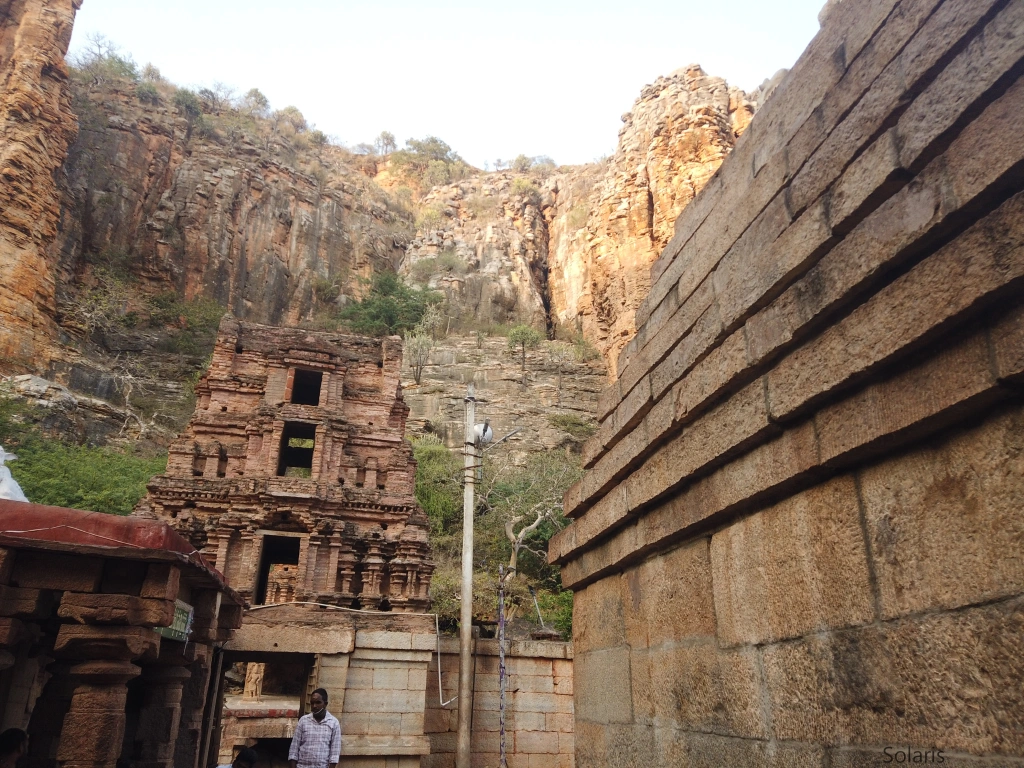
Accessibility
Uma Maheshwaram Temple is located about 100 kilometers from Hyderabad, making it accessible for day trips or weekend getaways. The nearest town is Achampet, which is well connected by road. From Achampet, the temple is about 14 kilometers away, nestled within the hills.
Buses and private taxis are available from Hyderabad and Nagarkurnool. For those who prefer to drive, the journey through rural Telangana offers scenic views and a peaceful drive. The approach road to the temple winds through forests and hills, adding a sense of anticipation to the visit.
While the temple is relatively remote, the road connectivity has improved in recent years, making it easier for pilgrims and tourists to reach. However, carrying essentials like water and snacks is recommended, especially if you plan to spend more time trekking around the area.
Ideal Time to Visit
The best time to visit Uma Maheshwaram is during the cooler months from October to March. The weather is pleasant, making both temple visits and treks enjoyable. Summers can be hot, although the temple itself remains cooler due to its cave-like structure. Monsoons bring lush greenery, but heavy rains may make travel slightly challenging.
Visiting during Maha Shivaratri or Karthika Masam offers the chance to witness the temple in its most festive form. On regular days, however, you can enjoy the peaceful environment with very few distractions.
Things to Do Around Uma Maheshwaram Temple
Visiting Uma Maheshwaram Temple in Telangana is not just about offering prayers. The temple’s surroundings are equally fascinating and provide a range of activities for devotees, nature lovers, and explorers. From trekking trails to natural springs, there is plenty to experience that complements the spiritual essence of the temple. Here are some things you can do when planning your visit.
Explore the Papa Nashini Spring
Just a short walk from the temple lies the Papa Nashini spring, believed to purify devotees from sins. Taking a dip here is a ritual many pilgrims follow before entering the sanctum. The water flows through the year and feels refreshingly cool even during the hotter months. Spending time here is not just about ritual cleansing, it is also about experiencing a natural wonder tucked into the forests of the Nallamala Hills.
Many visitors choose to sit near the stream, listening to the sound of flowing water and reflecting in silence. If you are visiting with family, children often enjoy playing near the shallow sections of the spring.
Trekking in the Nallamala Hills
The temple is surrounded by the Nallamala Hills, which are a paradise for trekkers. Trails range from easy walks suitable for beginners to more challenging paths for seasoned trekkers. The forest canopy provides shade, and the variety of flora and fauna make the journey exciting.
One popular trek is from Uma Maheshwaram to Srisailam, though it requires preparation and guidance from locals. Shorter trails closer to the temple are ideal for those who want a half-day adventure. The views from higher points give breathtaking panoramas of the forests and valleys, making it a rewarding activity.
Meditation in the Natural Caves
The caves near the temple have been used by saints and yogis for centuries as places of meditation. Even today, the caves carry a sense of tranquility and stillness that makes them perfect for meditation or simply sitting in silence.
Visitors who want a deeper spiritual connection often spend an hour or two inside the caves, away from distractions. The natural coolness of the cave, combined with its peaceful atmosphere, creates an environment where you can easily focus on inner reflection.
Birdwatching and Nature Walks
The Nallamala forest is home to a rich variety of birds and wildlife. For nature lovers, carrying a pair of binoculars can add a new dimension to the trip. You might spot peacocks, parakeets, or even rare forest birds if you are lucky.
Walking along the trails around the temple, you will notice how the forest shifts in color and character depending on the season. In winter, the crisp air and rustling leaves create a soothing backdrop. During monsoon, the greenery is at its peak, making it a great time for photography.
Photography of Rock Formations
The natural rock formations around Uma Maheshwaram are striking. Many of the rocks form unusual shapes and patterns, and their reddish hues look particularly stunning during sunrise and sunset. If you are interested in photography, these landscapes provide endless opportunities.
The contrast of the stone temple nestled against rugged hills makes for a classic frame. Pilgrims and photographers alike often capture the harmony of spirituality and nature through these compositions.
Participate in Festivals
If your visit coincides with Maha Shivaratri or Karthika Masam, you will have the opportunity to witness vibrant celebrations. The temple comes alive with chants, music, and traditional rituals. Participating in these festivals adds a community aspect to your visit, as locals and devotees from across Telangana gather to celebrate together.
Being part of the night-long vigil during Shivaratri or lighting lamps during Karthika Masam can be a memorable and spiritual experience.
Picnicking in Scenic Spots
For families or groups, the open areas around the temple are great for picnics. The cool breeze, forest shade, and open views make it a relaxing spot to enjoy a meal together. Since the temple is not heavily commercialized, it is wise to carry your own food and water.
Sitting under a tree and sharing home-cooked food after offering prayers feels simple yet fulfilling. Just make sure to leave the area clean and respect the sanctity of the place.
Visit Local Villages
The villages around Achampet and Nagarkurnool give a glimpse into rural Telangana life. Taking a short detour to these villages can enrich your trip with cultural experiences. You can interact with locals, learn about traditional farming methods, or try local delicacies.
Some villagers also share folk stories connected to Uma Maheshwaram, which adds depth to the temple’s spiritual narrative. Buying handicrafts or simple souvenirs directly from villagers also helps support the local community.
Stargazing at Night
Due to its elevation and remote setting, the skies around Uma Maheshwaram are relatively clear of city lights. If you stay late into the evening or plan an overnight trip, stargazing is an unforgettable experience.
Lying on the temple steps or near the hills and watching the sky fill with stars is both romantic and humbling. For couples or groups of friends, this can be one of the highlights of the journey.
Combine with a Visit to Srisailam
Uma Maheshwaram is considered the northern gateway to the Srisailam temple, one of the twelve Jyotirlingas of Lord Shiva. Many devotees choose to combine both visits, starting at Uma Maheshwaram and continuing onward to Srisailam.
The route itself is scenic, winding through the forests of Nallamala. If you have a few days in hand, combining the two temples provides a holistic spiritual experience, covering both the gateway and the central shrine.
How to Reach Uma Maheshwaram Temple
Uma Maheshwaram Temple, nestled in the dense Nallamala Hills of Telangana, is a destination that blends spirituality with nature’s charm. It is known as the northern gateway to the famous Srisailam Jyotirlinga, and though it feels remote, getting here is not too complicated once you plan well. Whether you are traveling from Hyderabad, other cities in Telangana, or even further, there are multiple routes and travel options to consider.
Reaching by Air
The nearest airport to Uma Maheshwaram is Rajiv Gandhi International Airport in Hyderabad, located about 160 kilometers away. This airport is well-connected to major Indian cities such as Delhi, Mumbai, Bengaluru, and Chennai, as well as to international destinations.
From the airport, you can hire a taxi or use app-based cab services to reach the temple directly. The journey usually takes around four hours by road, depending on traffic and weather. Another practical option is to rent a self-drive car, which gives you flexibility to stop at scenic points along the way.
Reaching by Train
The closest railway station is Jadcherla, which is around 60 kilometers from the temple. Jadcherla is connected to Hyderabad, Kurnool, and other important towns. From Jadcherla, visitors can hire local taxis, auto-rickshaws, or even state transport buses to cover the remaining distance.
For those coming from further locations, Hyderabad Deccan (Nampally) and Secunderabad Junction are the larger railway stations with excellent connectivity across India. After reaching Hyderabad, you can continue by road to Uma Maheshwaram.
Reaching by Road
Road travel is the most convenient and popular way to reach Uma Maheshwaram Temple. The temple is located about 120 kilometers from Hyderabad, and the route is fairly straightforward.
Route from Hyderabad:
Hyderabad → Shamshabad → Shadnagar → Jadcherla → Achampet → Uma Maheshwaram
The roads are well-maintained for most of the journey, though the last stretch near the temple passes through forested terrain and may feel slightly rough. This section adds to the sense of adventure and seclusion that the temple is known for.
Travel time: On average, it takes about 3.5 to 4 hours to cover the distance by car or taxi.
Bus Services: Telangana State Road Transport Corporation (TSRTC) runs regular buses from Hyderabad and Mahbubnagar to Achampet, the nearest town to the temple. From Achampet, visitors can hire autos or shared jeeps to cover the final 14 kilometers.
Local Transport Options
- Private Taxis and Cabs: The most comfortable option, especially for families and groups. They can be booked from Hyderabad or Jadcherla.
- Self-Drive Cars: Popular among younger travelers and couples, as it allows flexible stops for sightseeing.
- Shared Jeeps and Autos: Available from Achampet to Uma Maheshwaram, these are economical and commonly used by locals.
Tips for Travelers
- Plan your journey during daylight hours. The forested terrain near the temple is best traveled when visibility is good.
- Carry sufficient food and water. While small stalls are present in Achampet, options near the temple itself are very limited.
- Fuel up beforehand. Ensure your vehicle has enough fuel, as petrol stations are not easily available near the temple.
- Check weather conditions. The area receives heavy rains during the monsoon, which can make the forest roads slippery. Winter and post-monsoon months are the best for smooth travel.
- Combine with other attractions. Many visitors extend their trip to include Srisailam Temple, which lies further along the Nallamala forest route.
Travel Duration from Key Locations
- Hyderabad to Uma Maheshwaram: ~4 hours by road
- Jadcherla to Uma Maheshwaram: ~1.5 hours by road
- Achampet to Uma Maheshwaram: ~30 minutes by jeep or taxi

